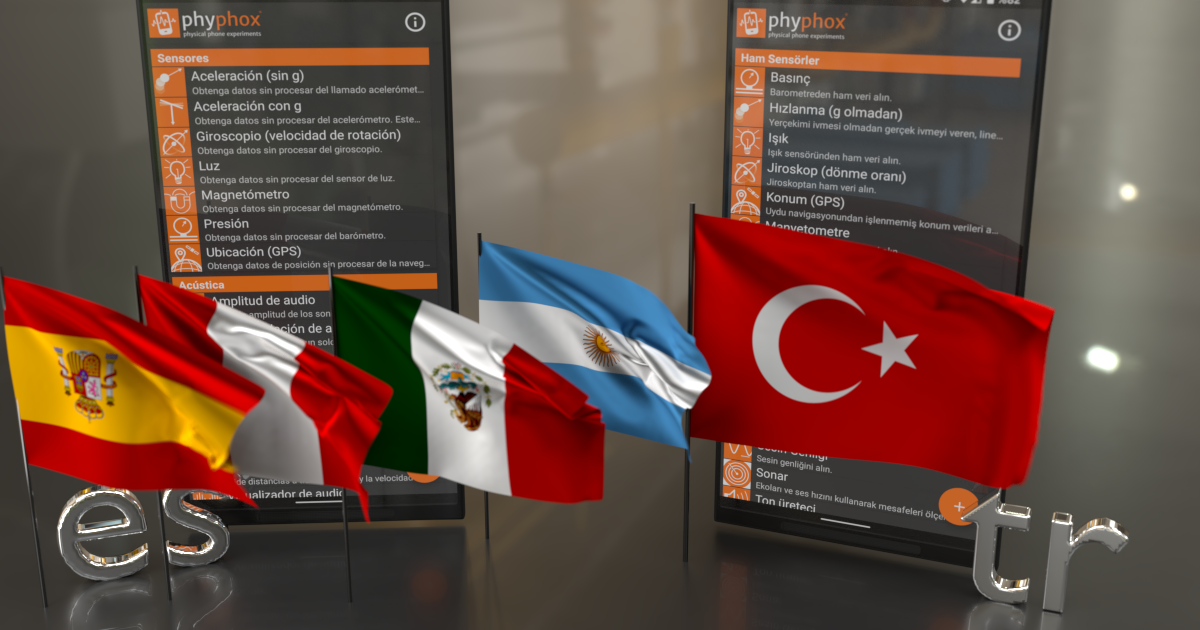Earlier today we have published version 1.1.5, which mostly introduces new translations into Spanish (by Edinson Isai Carlos Abanto, Guillermo Jorge and Ruben Santiago Martinez) and Turkish (by Fatih Can Birinci). Note that the Turkish translation already partially slipped into previous releases by accident when it was still incomplete. There are also some minor improvements and a list of little bugs that have been fixed.
Changelog
Changes on Android and iOS
- Spanish translation.
- Turkish translation (this has partially been enabled before by accident).
- Spectrum experiments now have a peak frequency history plot.
- The apply-zoom dialog when leaving a graph now defaults to “reset”, but remembers if you want to keep the zoom for the next time.
- Fix: Remote interface breaks if NaN / null values are to be plotted. (Typically in frequency history or Doppler effect experiments)
Changes on Android
- Fix for Bluetooth Experiments failing to load if using specific conversion functions on many Android devices.
- Fix Bluetooth input conversion “formattedString” failing when using indices without explicitly specifying empty labels.
- Fix: GPS experiments crash on phone that do not offer a network-based location service.
- Fix black background of graph toolbar on some devices (i.e. Pixel 3).
Changes on iOS
- Fix unresponsive Bluetooth scan result dialog.
- Fix for Bluetooth: Pick write with/without response depending on peripheral’s capabilities.
- Fix Bluetooth input conversion “formattedString” failing when using labels (this is different than the similar Android fix).
- Fix for crash when sending an empty /control or /export request to the remote access webserver.
File format version 1.9
- New Bluetooth device atttribute “mtu” to request a specific MTU size.
- Support for new sensor type “attitude”.
A little footnote, in case someone is wondering: Spanish is a great example for which the concept of representing languages with flags fails miserably. None of the translators above comes from Spain, so just using the Spanish flag feels rather unfair and wrong, but it needs to be in the picture as it is the one that is best associated with the language. Then which other flags to include? Well, I chose the ones matching our translators, but there is a long list of countries that might feel left out when just looking at the picture…

